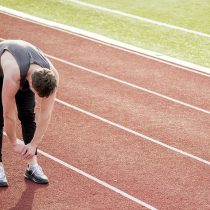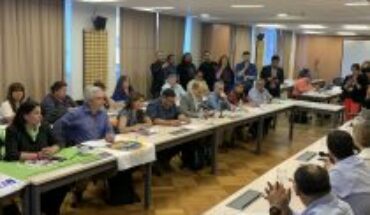
A series of myths regarding the cause of frequent injuries in runners or runners analyzed British sports therapist and writer Matt Phillips, in a webinar organized by the Career of Kinesiology of the Pontifical Catholic University. Studies talk about 20 to 79% of runners getting injured each year and their causes are not easy to identify. Training overload appears to be the main problem of more than 70% of injuries, the international exhibitor said.
Insufficient elongation, incorrect shoe selection, lack of pre-heating, the surface of practice and prior physical condition, on their own, are usually erroneously attributed causes to frequent injuries in runners. For Phillips, the evidence is mainly associated with training errors, especially excess. “A good education in runners could reduce the risk of injury and for this it is more important a good planning of training, taking care of its dosage and the combination of some sessions of strength training or other physical exercise, in addition to running,” said the specialist.
Matt Phillips noted that, in fact, stretching or elongation is not a determining factor according to evidence to prevent injury. There are some studies that even talk about that it might decrease the economics of the race, so it might not help performance. He noted that “strength training makes you a stronger runner, not stretching.”
As for footwear, runners often blame injuries on the wrong choice of shoes and in general we are constantly looking for promising technologies and designs. Phillips explains that “the truth is that we don’t know why some people get injured and others don’t wear the same shoes. This is extremely personal and there are runners who for years are looking for the shoe that is already discontinued in the market and if we see the cases of the great Kenyan marathoners, we will observe that the tread is not perfect and the footwear in general is quite basic.”
In a 2013 study, 1000 runners were analyzed based on their tread type and performance, and the truth is that the moderate pronation of the foot and the consequent decrease in the medial arch of the foot was not associated with any injury, commented the international running expert. He mentioned that “6 out of 10 runner injuries are due to overload in training and not to the shoe, or to the surface, or to the biomechanical characteristics of the runner. It’s more of a matter of the load exceeding the capacity of the fabric.”
Another belief runners have is that by training muscle strength they “get heavier to run.” Phillips stated on this issue that “training strength doesn’t make you heavier or slower, on the contrary, it improves your running economy. Including 2 to 3 times per week sessions of 30 minutes of strengthening would suffice.”
Phillips advised not to focus on avoiding runner injuries, but perhaps on lowering the risk of injury. He noted that “we must stop telling brokers that we have tools to prevent, nothing prevents, we should talk about lowering the risk of injury. Quality training, interspersed with strengthening and education sessions, are the determining factors in this area.”
The teacher of the UC Kinesiology racer, a long-distance runner and fourth Chilean in the historic record of the 2019 Chicago Marathon, Magdalena Chamorro, comments: “It is interesting to see that there are many beliefs and habits surrounding running and that knowledge of its true effectiveness is unknown by much of the runners. Educating the runner, based on the best scientific evidence, is essential to be able to break with these paradigms and in this way, reduce the risk of injury, boost performance and manage to enjoy for many years this exciting sport”.
According to evidence, maximum, explosive, and pliometric load strength training is likely to further favor athletic performance and the economy of the athlete’s career. “This is of great importance in master athletes where there is a progressive loss of muscle and cardiorespiratory fitness with age. It is essential to plan individually the training, maintaining good communication with the coach, allowing re-gular the workload and recovery days in the best possible way, to finally achieve an improvement in athletic performance and reduce the risk of injury,” says the kinesiologist.
Tips for the runner
The kinesiologist and teacher of the career of UC Kinesiology, long distance runner Gustavo Torres, says that “the most important advice is to plan the trainings and thus contribute to reduce the risk of injury. This measure also helps control and progress in mileage, should include different types of training, strength work, proper rest and it is very relevant to always allow some flexibility in the plan.”
Gradually modify your training. Every release on something new should be done with caution, this includes new shoes or new surface. Our bodies are excellent for adapting to change, but it takes time. Be cautious with interval training and hill work, as they are the most risky forms of training in terms of injuries and should be approached with caution, especially for in-experience runners. Running downhill is associated with patelofemoral pain and iliotibial band problems, while running uphill increases loads on the calf and Achilles tendon.
Don’t be a slave to numbers. Don’t decide you’re going to make a certain distance and force yourself to stand your ground. Listen to your body.
Choose a goal for each workout, problems often occur when runners try to achieve too much at once in a single workout.
Rest as long as necessary. Evidence shows that those who train year-round relentlessly are more likely to get injured. The mantra “rest is part of the training” helps to allow you to rest. Also remember to maintain a good hyratation and feeding.
Includes strength training and fitness sessions. This methodology can improve the career economy and is likely to reduce the risk of injury. Consider the work of strength, balance and flexibility. Combine training types, different routes when running and maintain variability.





